Stay in the know on all smart updates of your favorite topics.
#SmartThursday: Why Smart? Terug naar de basis met de gemeente als aanjager
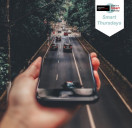
Slimme mobiliteit: is het een doel of een middel? Waarom eigenlijk slim? En wat is slim voor jou? Sinds corona is de mobiliteit van werkend Nederland in een nieuwe fase terecht gekomen. Van de ene dag op de andere is thuiswerken de norm, ook daar waar het vroeger onbespreekbaar was. Het slimst op dit moment is thuiswerken, dus geen mobiliteit.
"De duurzaamste kilometers zijn de kilometers die je niet maakt.” Voor een platform Smart Mobility is dit wellicht de wereld op zijn kop. Maar voor ons begint ‘slim’ bij preventie als de beste oplossing en daarin is nog een wereld te winnen. Dit is hét moment om het ‘waarom’ van reizen terug op de agenda te zetten. Als werkgever en beleidsmaker kunnen gemeenten hier een voorbeeldfunctie in hebben. Een open vraag aan gemeenten om hierin de rol van koploper te nemen.
In de sessie brengen we naast inspiratie ook handige hulpmiddelen. Rein Aarts en Rutger van der Veen nemen je mee in de Breikers werkgeversaanpak. Hoe ondersteunen wij werkgevers in de overgang naar duurzame mobiliteit? En op welke manier kunnen gemeenten de rol van aanjager pakken? Hierover gaan we in gesprek met wethouders Gerard Slegers van Zaanstad en Rineke van Korrel van Ouder-Amstel. Ook gaan we in op knelpunten en participatie, waaronder het betrekken van ondernemers.
Het wordt een leuke, interactieve sessie met voorbeelden uit de praktijk en de mogelijkheid om met de wethouders en Breikers in gesprek te gaan. Heb je vooraf al vragen? Stuur ze alvast naar rutger@wijzijnbreikers.nl.
New Metropolitan Mobility podcast !

Did you do a bike exam in school?
Listen how Rotterdam is trying to get all inhabitants on a bike: https://bit.ly/mobilitypod
In this podcast Geert Kloppenburg speaks with Chris Bruntlett (Dutch Cycling Embassy), urban planner José Besselink and cycling specialist Bart Christiaens of the municipality of Rotterdam.
Please share your thoughts on the podcast!
#cycling #Rotterdam #podcast
Smart City projects in Netherlands/Amsterdam
Hello! I do some research for my company and I have to find out who (companies) are the players in the Smart City market (Netherlands/Amsterdam) who have successfully implemented projects without specializing in just one solution - so here I'm looking who offer complete smart city offers that combine several solutions (e-waste, e- bike, e-mobility, smart bench, smart light, smart parking….)? Thank you!
Metropolitan Mobility Podcast: De stad slimmer en schoner van goederen voorzien?
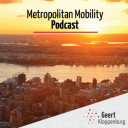
In deze podcast gaat Geert Kloppenburg in gesprek met Walther Ploos van Amstel en Carin ten Hage over digitale voorwaarden voor gezonde stadslogistiek. Luister hier de podcast: http://bit.ly/38ASVZ
Tool voor innovatie in de mobiliteitssector
Elektrisch rijden, slim laden, auto’s delen: mobiliteit is radicaal aan het veranderen. Hoe moeten bedrijven in de mobiliteitssector omgaan met die talloze mogelijkheden en de toenemende complexiteit die daarmee gepaard gaat? Onderzoeker René Bohnsack (HvA) ontwikkelde een tool met businessmodel-patronen: een verzameling van bewezen praktische oplossingen en verdienmodellen die gebruikt kan worden om de creativiteit in het innovatieproces te stimuleren.
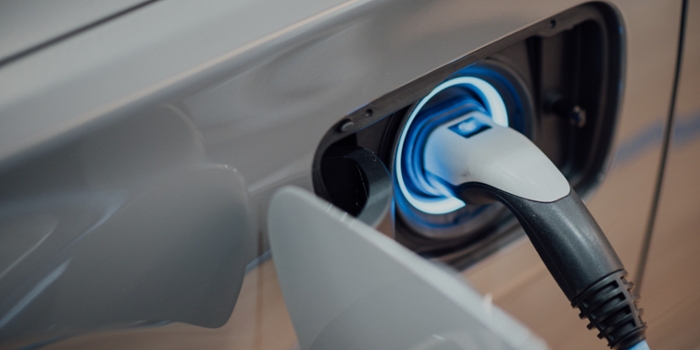
‘Onze missie is om bedrijven in staat te stellen te profiteren van de innovatie van businessmodellen in de context van digitale transformatie, duurzaamheid en internationalisering’, vertelt onderzoeker en projectleider Bohnsack. ‘Daarom ontwikkelden we in 2014 ons onafhankelijke businessmodel-platform Venturely, om bedrijven sturing te geven in innovatieprocessen binnen sterk veranderende markten. Dat doen we online met stapsgewijze begeleiding, praktische sjablonen en tools voor bedrijfsmodellering.’
Tool ingezet voor e-mobiliteit
Venturely heeft zich inmiddels ontwikkeld tot een database met bewezen oplossingen en verdienmodellen binnen uiteenlopende sectoren. ‘Voor de HvA zijn we in 2020 een aparte module gestart binnen de tool omtrent elektrisch vervoer’, vertelt Bohnsack. ‘Bedrijven op het gebied van mobiliteit, zoals aanbieders van laadoplossingen, hebben namelijk te maken met diverse uitdagingen door de huidige energietransitie. Denk aan een nieuwe fysieke en digitale infrastructuur, nieuw beleid én nieuwe businessmodellen.’
‘We hebben bestaande businessmodellen voor elektrisch rijden verzameld en gecategoriseerd in een database, op een manier zodat iedereen ze kan begrijpen en gebruiken voor hun eigen businessmodellen en doeleinden. We bieden de businessmodel-patronen voor elektrische mobiliteit aan in overzichtelijke lijsten met labels, zodat beroepsbeoefenaars uitgerust zijn met een hulpmiddel om businessmodellen voor de toekomst te creëren, uit te breiden en te herzien.’
Een businessmodel beschrijft de waarde die een organisatie biedt aan verschillende klanten. Het geeft daarnaast de capaciteiten en stakeholders weer die nodig zijn voor het creëren, vermarkten en leveren van deze waarde. Met als doel: winstgevende en duurzame inkomstenstromen genereren. Dat is niet makkelijk in een sterk veranderende sector als die van mobiliteit. Driekwart van de startups faalt, mede door het gebrek aan een gezond businessmodel.
Handig in het onderwijs
Bohnsack: ‘De tool helpt je out-of-the box te denken en begeleidt in het nemen van de juiste stappen in het innovatieproces. Daarom is de tool ook bij uitstek geschikt binnen het onderwijs, waar hij al ingezet wordt. Studenten kunnen verschillende scenario’s naast elkaar zetten en deze eenvoudig visualiseren, om te experimenteren met creatieve ideeën. Zij komen zo hopelijk weer met nieuwe innovatieve businessmodellen binnen de mobiliteitssector die werken.’
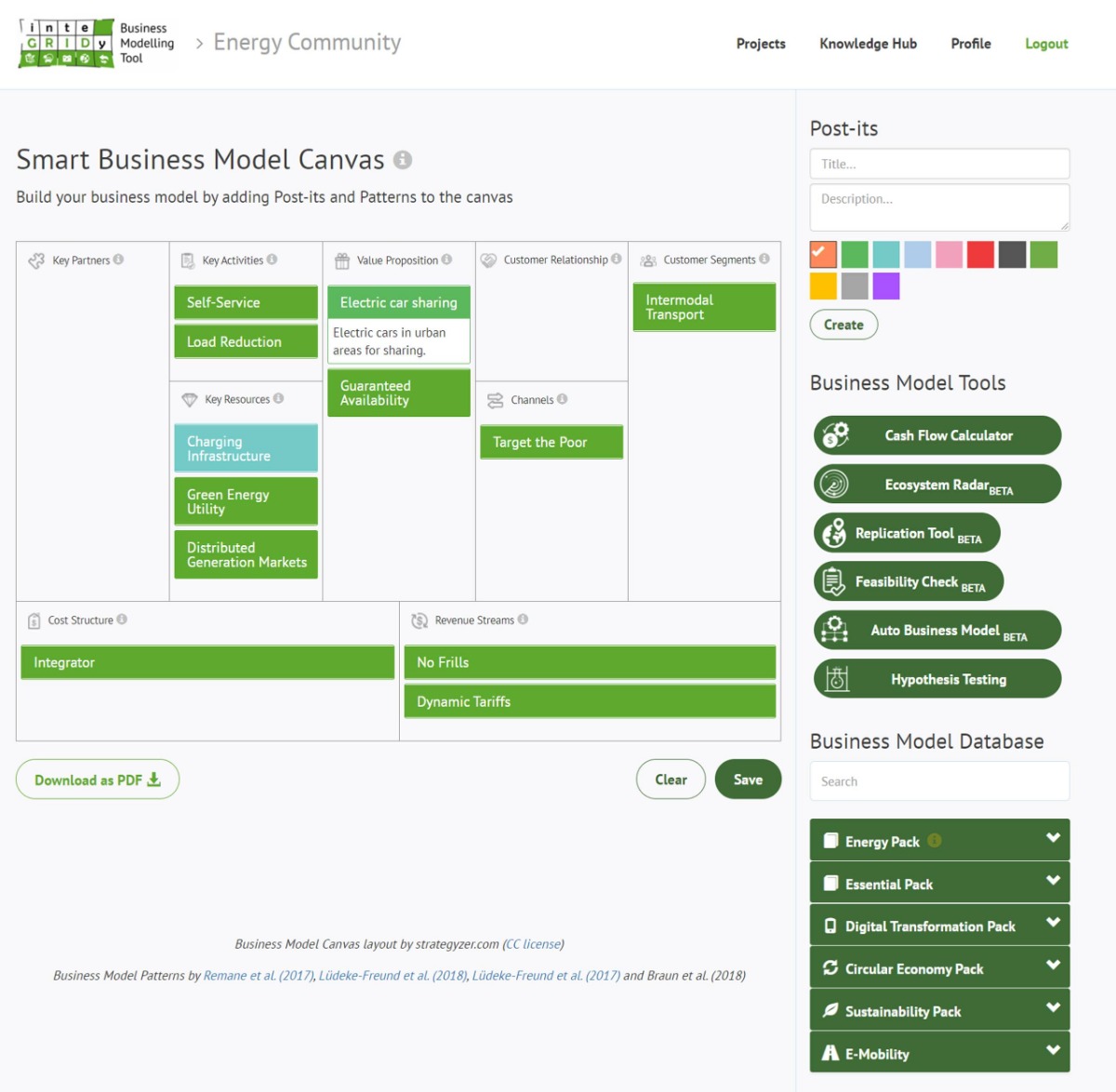
Fictief voorbeeld in tool Venturely voor businessmodellen
Partners Heliox en Over Morgen
Het project gericht op elektrische mobiliteit is een samenwerking met Heliox en Over Morgen, die als klankbord dienden en de data controleerden. Heliox zet zich in om inspirerende ideeën om te zetten in innovatieve en betrouwbare energieproducten en -diensten. Over Morgen is een adviesbureau dat werkt aan een duurzame leefwereld met een integrale aanpak op het snijvlak van gebiedsontwikkeling en energietransitie.
Me2 en V2X
Het idee om de tool uit te breiden met een database succesvolle businessmodellen komt uit eerdere onderzoeken omtrent eigen businessmodellen waar Bohnsack bij de HvA aan werkte: Me2 en Vehicle2Grid (V2X). In het project Me2 werden lokale gebruikers van elektrische voertuigen (EV) en eigenaren van lokale slimme meters bijeen gebracht door een nieuw platform: Smart City Aggregator. Doel was het ontwikkelen en verifiëren van een stedelijke marktplaats dat vraagsturing van e-mobiliteit en automatisering van slimme meters bij elkaar brengt, met een innovatief businessmodel.
In het project V2X werd een pilot uitgerold waar de batterij in een EV als buffer gebruikt wordt, en elektriciteit teruglevert aan het net bij piekbelasting. Wanneer een auto de hele nacht bij een laadpaal staat, start de laadsessie op een moment waarop juist weinig vraag is naar elektriciteit, zoals ’s nachts. En op momenten met veel vraag naar (en een tekort aan) duurzame elektriciteit kan de energie uit de batterij weer terug worden gestuurd naar het elektriciteitsnet. Het project testte de gebruikerservaring voor de consument en bijpassende businessmodellen.
Meer informatie
Het project omtrent de Venturely-tool is onderdeel van lectoraat Energie en innovatie. Het lectoraat valt onder het onderzoeksthema Energietransitie van Centre of Expertise Urban Technology, dat gaat over het leveren van een bijdrage aan de lokale duurzame energietransitie met focus op warmtenetten, vergroting zonne-energie, smart grids (met focus op inpassing van elektrische mobiliteit), energieneutrale- en positieve gebouwen/wijken en de ontwikkeling van laadinfrastructuur voor elektrisch vervoer.
Latest developments in the Amsterdam Smart City program

Last December, the 20 partners of Amsterdam Smart City came together to present the progress of innovation projects, ask for input, share dilemmas and involve other partners in their initiatives.
Following the thought that nobody wants to live in a smart city but in a nice, friendly, cosy city we work on challenges in which people play a central role. These gatherings are called Demo days and occur every 8-10 weeks. Get a quick overview of the topics and projects about to happen in the Amsterdam Metropolitan Area and let us know if you want to be involved!
ELSA Lab: AI, Media & Democracy
Pascal Wiggers, senior lecturer Responsible Artificial Intelligence at Amsterdam University of Applied Sciences, is working on an Ethical Legal Societal Aspects Lab to investigate and shape the impact of AI on our society. The University of Applied Sciences is doing this in co-creation together with residents, companies, knowledge institutions and governments. Partners want to understand how AI-driven applications in the media and public space
influence democracy. They also want to experiment with new applications of AI in the media and in the democratic process and draft new ethical and legal guidelines. Pascal is looking for parties that want to join the consortium. Various Amsterdam Smart City partners are interested to join. You too?
Object Detection Kit
Keeping the city streets clean is a major challenge. Maarten Sukel from the City of Amsterdam developed an image recognition system that shows streets in real time maps. For example, garbage bags and other unwanted objects in
the street scene are recognized. The system is based on machine learning and ultimately, we can clean Amsterdam more efficiently and sustainably. The system is continuously improved and tested. In the future it might be used for the recognition of water puddles in the streets, track missing pets, link with a module that shows the value of objects on the streets and more.
Seenons
Seenons believes in a future with 0% residual waste as a standard. Seenons makes it easy to separate waste and then pick it up separately and sustainably. Citizens and companies offer their separate flows via an app, the Seenons platform proposes the optimal route with the best transport options and delivers the residual flows to processors who make new products of them. Seenons also prevents contamination of flows through clear separation and fine-meshed collection. Environmental friendly transport is used, such as cargo bikes.
Mapping of material flows
Maintaining the value of the raw materials was a central topic at this Demoday. Martijn Kamps from Metabolic started with a presentation about recycling of materials. Based on cases in Rotterdam and Philadelphia he showed that there is a lot of construction and demolition waste that is still dumped or burned. This is issue is still not solved because there is too little data available about these materials. According to Metabolic, urban mining can help. A lot information about volumes of waste is available, but there is no business case yet. You can see where flows come from, identify them, decide where you store materials in the meantime and then, where you want to reuse them. The PUMA project was one of the first projects in this field and current projects are all a sequel to PUMA.
Arnout Sabbe from Geofluxus continued. Geofluxus is a startup which originates from REPAIR, a project with Metabolic and AMS Institute, among others. Geofluxus is working on a reclassification model for raw materials. Currently, there are many databases in which raw materials are registered. Geofluxus brings these together as a combination of data sources from industrial waste. In the Geofluxus monitor you can see how p.e. wood from the Amsterdam Metropolitan Area eventually spreads all over the world. It shows the impact on the road network and CO2 emissions for certain waste streams elsewhere. Geofluxus is developing this monitor for the City of Amsterdam and expects to have it ready by the end of next year, although the municipality is dependent on the availability of data. New partnerships are therefore necessary. But a first success is already visible: through the monitor is clear that 70% of the waste in the Amsterdam Metropolitan Area is caused is used by only 7% of companies. A result worth continuing this work and something to hold on to!
Collaboration between governments and innovative companies
In order to innovate we have to work together; governments and innovative companies. That is not always easy. Various organizational cultures and interests collide. Everyone is in their own system and has its own pace. We had an open and honest discussion on this based on two cases. One of the companies started with some positive feedback: the region is at the forefront of circularity, there is a lot of attention and ambition. But collaborating is different. The company experiences a lot of reluctance, especially from governments. There is little willingness to take
responsibility and work outside existing frameworks. In addition, there is an enormous fragmentation of tasks and a fear of explicitly saying yes or no. For the other company this story is recognizable. They experience a lot of enthusiasm about their company, but still it takes a huge amount of time to involve different departments and decision making is very slow. They noted it is time to get out of the pilot sphere and important to mention business models early on.
There was a lot of understanding and recognition from the government side. They recognized the stories about the silos and indicated that it takes a lot of people and time to make decisions. Governments are less likely to think outside the box and both parties must invest in building trust. The advice that came out for both parties: embrace complexity, be persistent, be open to each other, be clear about expectations, go where the energy flows. And as a positive conclusion: once collaboration is there, governments are nice, loyal and reliable partners.
CleanMobileEnergy (CME)
Cenex The Netherlands is in the middle of the development of an intelligent Energy Management System (iEMS), based on three urban pilots in Nottingham (UK), Arnhem (NL) and Schwabisch Gmund (DE). The goal is to develop a transnational and generic iEMS. In these cities, the pilot elements are currently being put out to tender and connected to the iEMS. Cenex would like to know which mobility and energy initiatives could be suitable for integrating in this iEMS.
Sharing Energy in Almere Haven
The City of Almere joined Amsterdam Smart City as a partner and has many great initiatives to share with the network. In 2020 Almere started EARN-E to reduce the use of electricity and gas in people's homes. Next year, Wijkie will be launched: this combines the energy transition with social needs in a neighbourhood. The core is the sharing of energy with your neighbours in your neighbourhood. In order to set up Wijkie successfully, it is important to enter into dialogue with residents.
The Energy Transition Explained
The energy transition is "hot". Much has been reported in the media, but the reporting is not always easy to understand and sometimes even confusing. Knowledge is needed to critically follow the news about the energy transition. That is why Sanne de Boer wrote the book ‘De energietransitie uitgelegd’. The book provides all the basic knowledge needed to follow news and form informed opinions in discussions. Sanne is looking for suggestions for where to market her book to be able to transfer this knowledge.
Curtailment for solar panels
As an energy platform, Vandebron is an innovative player in the field of sustainable energy. They took us along in the story of solar panel curtailment: remotely on and off switching of energy. A well-known phenomenon in the energy world is that the electricity demand is reasonably stable, but due to the volatility of renewable energy there are significant peaks in the electricity supply every year. The result is that the energy grid becomes full due to the surplus of electricity. This creates problems for the grid operator, who is then forced to hand out a fine. In this case, this means a possible fine for Vandebron, who then has to pass it on again to the producer. Nobody is happy about that.
Curtailment could be a solution. Curtailment makes sure that a surplus can be avoided, when solar panels are switched off in time. The central question is: "How to do this effectively?" It is clear that some degree of curtailment is inevitable, but it is also important to determine whether the energy surplus can be reduced in another way. There is still a world to be won with out-of-the-box thinkers on board.
Energy from braking power
The engine of a train or tram is comparable to the dynamo of a bicycle. In addition to powering the train, the motor is also able to generate energy. This happens, for example, during braking. How can we return the energy that is generated to the grid? And what are the options to apply this in neighbourhood hubs? Arcadis told us that energy generated with the brake of a train, can provide an average household with energy for 2.5 weeks.
This offers a lot of opportunities. Braking energy can be deployed immediately in your own system, it can be stored and then deployed, it can be made available to other parties via neighbourhood hubs. And there is more. Suggestions at that popped up at the demoday: returning energy to grid operators, making a link with buses, ferries and taxis, supplying shops at the station, neighbourhood batteries. To get a step further, possible obstacles have to be overcome as well of course. Experts will work on technological challenges and the saving of a lot of energy in a short time among others. In January, Arcadis, the City of Amsterdam, AMS Institute and Alliander will continue working on this topic. Interested? Then contact us.
GO!-NH Versnellingsprogramma's - inschrijven voor 9 februari

GO!-NH is een serie groeiversnelling programma’s (accelerators) van de provincie Noord-Holland. Deze zijn opgesteld de economie in Noord-Holland te stimuleren met focus op de sectoren: bouw, beton, chemie, fashion, agri & food, verpakkingsmateriaal, handel en horeca. De thema’s voor de ontwikkeling van de circulaire economie in Noord-Holland zijn:
- Energietransitie
- Duurzame Mobiliteit
- Agri-food
- Circulaire Economie; Afval als Grondstof; Modulair ontwerp; Plastics; Textiel
Deze speciaal ontwikkelde programma’s ondersteunen startups en MKB’ers bij het op de markt brengen en opschalen van innovatieve producten en diensten op het gebied van duurzaamheid. Met trainingen, tools en professionele coaching door experts ontwikkel je jouw bedrijf.
GO!-NH heeft drie verschillende trajecten samengesteld, zodat ondernemers de beste ondersteuning krijgen die past bij de fase en omvang waarin hun bedrijf zich bevindt. Daarnaast vormt de GO!-NH Academy een laagdrempelige ontmoeting met GO!-NH waarbij masterclasses ook los gevolgd kunnen worden.
Wat is de rol van data in de toekomst van mobiliteit?
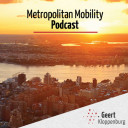
Geert Kloppenburg gaat er in de Metropolitan Mobility Podcast over in gesprek met Marleen Stikker (Waag) en Carin ten Hage.
Luister hier deel 1: http://bit.ly/marleenstikker1
Luister hier deel 2: http://bit.ly/marleenstikker2
Deze podcast is onderdeel van de serie A Radical Redesign for Amsterdam.
Smart Thursday #1: Sander Buningh Bam Infra
We gaan dóór na het Smart Mobility MRA Festival met de winterprogrammering. Elke donderdag wordt vanaf nu #SmartThursday. Met elke week een boeiende sessie van iemand uit het #smartmobility-veld. We trappen af met Sander Buningh van BAM Infra Nederland die vertelt over het Living Lab op Schipholwaar smart mobility-toepassingen (en in het bijzonder #speedbikes) worden getest. Benieuwd naar zijn verhaal? Schuif op 17 december tussen 16.00 en 17.00 uur digitaal aan en stel je vragen aan Sander en de platform-trekker van de werklijn Smart Infra Martin Visser. Kijk hieronder voor meer informatie en de toegangslink!
AI4Cities Request for Tenders has been launched!

We invite entrepreneurs, startups, companies and other relevant stakeholders to submit innovative solutions utilitzing AI technologies to help reduce CO2 and other GHG emissions in the energy and mobility domains!
Are you ready for the challenge?
Have a look at our guide to learn the following steps.
Join our webinar on the 15th of december
And check out the tender documents!
Amsterdam Smart City Demoday Energy x Mobility

Demodays are part of our innovation process and intended to boost the progress of the various innovation projects, put requests for help on the table, share dilemmas and involve others in your projects or challenges. Invitations are sent, but you can join!
The Amsterdam Smart City team hosts demodays every 8-10 weeks. Our partners put out concrete questions about projects they are currently working on. We set up pitches and organize workshops with them and other partners to get them to get a step further in their processes.
This time on the agenda:
- How can we apply the energy of regenerative braking in neighbourhood Hubs?
- Curtailment of wind turbines and solar panels
- CleanMobileEnergy project
- Wijkie & Earn-E
Time: 14.00 - 16.30h
This event is in Dutch and invitation only, however we are happy to be joined by others!
Do you feel like you should be there? Do you have knowledge or a network that could be useful for the session? Or do you want to learn more about one of the topics discussed? Please send an e-mail to menouschka@amsterdamsmartcity.com and we might save you a seat!
Roboat introduces full-scale boat ready for autonomous tests on the Amsterdam canals

What if autonomous boats could relieve Amsterdam's city center of heavy traffic over its vulnerable quays and bridges while making the canals a testbed for innovation?
Roboat – a research project by Massachusetts Institute of Technology (MIT) and Amsterdam Institute for Advanced Metropolitan Solutions (AMS Institute) – will provide self-driving solutions on water for different use cases. After successfully implementing full autonomy on the 1:4 and 1:2 scale boats, Roboat now introduces the first full-scale prototype – ready to start piloting real-life use cases.
Can't wait to see what the full-scale design looks like? Check out the video here.
The new 1:1 scale model
Roboat has a unique modular design. The vessel consists of a hull, that forms the technical basis of the boat, designed with different top-decks that can be applied for multiple use cases: transportation of people and garbage collection, as well as stages and bridges when latched together. The full-scale boat measures 2 by 4 meters. “These relatively small dimensions make the boat well suited for the urban environment,” says Carlo Ratti, Director of MIT Senseable City Lab and Principal Investigator in the project.
With four thrusters, the boat can move in all directions, making it agile and responsive to other traffic on the water, but also facilitating precise maneuvering for docking and latching.
“When individual Roboat units are latched, different combinations of floating platforms can be created. In their new configuration they form floating pixels and respond as new autonomous organisms” - Carlo Ratti | Professor at MIT Senseable City Lab & AMS PI
The full-scale Roboat is equipped with an improved perception sensor kit that combines LIDAR (Laser Image Detection and Ranging), GPS, DVL (Doppler Velocity Log) and camera-based object detection which enables the vessel to observe and scan the canals for path-finding and obstacle avoidance. When Roboat encounters an object in the water, the boat determines whether it is stationary or moving and measures the proximity and directionality of the object. The vessel then calculates the best maneuver to avoid the obstacle. After passing the obstacle, Roboat resumes its optimal route.
Pilots and experiments to develop use cases
In the coming months, the full-scale boat will be tested in the waters of Marineterrein Amsterdam Living Lab – a testbed for innovations and AMS Institute’s home base... Continue the full article here >>
Smart Mobility maatregelen kunnen bijdragen aan maatschappelijke opgaven

Smart Mobility maatregelen kunnen bijdragen aan onze klimaatdoelen, bereikbare en duurzame steden, een bloeiende economie, een prettige en gezonde leefomgeving en een vitaal landelijk gebied.
Samen met TNO heeft de Provincie Noord-Holland de kansen en uitdagingen op een rijtje gezet. Zo kunnen slimme technieken zorgen voor een betere bereikbaarheid, het terugdringen van de CO2-uitstoot en de ruimte, die steeds schaarser wordt, efficiënter gebruiken.
Operationeel Mobiliteitscentrum (OMC)

In de toekomst zullen we ons anders door de stad moeten bewegen. Vanwege de toenemende drukte en de verduurzamingsopgave zullen we minder afhankelijk moeten worden van onze privéauto. Dit betekent meer fietsen, meer met het openbaar vervoer en meer gebruik van nieuwe vormen van vervoer zoals deelmobiliteit. Om deze mobiliteitstransitie te kunnen faciliteren moet de gemeente ook haar rol als wegbeheerder herzien. De huidige verkeerscentrale is namelijk nog vooral gericht op klassiek wegverkeer en kijkt dus niet naar de verschillende mobiliteitsstromen. Daarom testen we in Amsterdam Zuidoost met een nieuwe mobiliteitscentrale die naar alle verschillende mobiliteitsstromen kijkt.
Wicked Problems
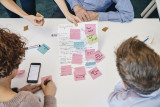
Te wicked? Niet voor ons.
Wij werken allemaal aan urgente, complexe, maatschappelijke uitdagingen. Issues die schier onoplosbaar lijken, van dilemma’s en paradoxen omgeven, nog niet duidelijk hoe het moet. Wel is duidelijk dát het moet, dat we elkaar nodig
hebben en dat we er NU aan moeten beginnen. Om met de woorden van Jan Rotmans te spreken; we leven niet in een tijdperk van verandering maar in een verandering van tijdperk. En hier hoort een nieuwe gereedschapskist bij.
En of je nou aan energietransitie werkt, andere mobiliteitssystemen, creëren van waterstofhubs, peer to peer autodeelsystemen, het maakt niet uit, we zien dat al deze opgaven op enig moment tegen gelijksoortige barrières aanlopen. Op samenwerking, financiering, privacy, onvoldoende aansluiting op de maatschappij, om maar een paar voorbeelden te noemen.
Unieke samenwerking
Als Amsterdam Smart City netwerk willen en kunnen we deze opgaven niet laten liggen. Door het bundelen van onze kennis en expertise kunnen we als netwerk iets unieks bieden en de wil en durf tonen om deze barrières te doorbreken. De betrokken partners die dit uitdenken en begeleiden zijn RHDHV, Kennisland, Drift, NEMO, Arcadis, Alliander, HvA en Metabolic. Zij bundelen hun expertise en ervaring om de echte vragen boven tafel te krijgen, tot nieuwe manieren van samenwerken te komen en barrières te doorbreken. We richten ons met name op de start van de samenwerking. Gezamenlijk ontwikkelen we een ‘wicked problem aanpak’. Op een nieuwe manier, lerend door te doen, exploratief.
Waar moet je aan denken?
Wat is eigenlijk het echte probleem? Wiens probleem is dit? Hoe kijken anderen er tegenaan? Welke andere partijen lijken nodig? Hoe vind je ze? Hoe ga je om met eigenaarschap en botsende frames? Hoe zorg je dat je al in
een vroeg stadium de maatschappij (bewoners, ondernemers, werknemers, etc) betrekt en hun ervaringen in het project trekt? Het wicked problem team zet nieuwe methoden in voor het beantwoorden van deze vragen. En het creëren van de benodigde commitment om het vraagstuk aan te pakken. Niets staat van te voren vast, want we passen ons aan aan wat we tegenkomen. Met elkaar ontwikkelen we een nieuwe aanpak om de barrières te doorbreken.
EIT Urban Mobility startup accelerator program open for applications
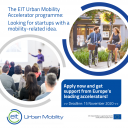
Calling all mobility startups! The application phase for the EIT Urban Mobility Accelerator programme batch #2 is open now.
This is an EU-funded programme with five Innovation Hubs spread over Europe to take early-stage startups with a mobility-related business idea to the next level. Dutch startups are able to apply for the Innovation Hub West program. The Hub West program is executed by a consortium of AMS Institute, Gemeente Amsterdam, TU Eindhoven, Brainport.
Also visit: https://www.ams-institute.org/news/eit-urban-mobility-accelerator/
For the central information from EIT Urban Mobility and how to apply please go to:
https://www.eiturbanmobility.eu/the-application-phase-for-the-eit-urban-mobility-accelerator-programme-batch-2-is-open-now/
The benefits:
€ 15,000 in equity-free funding for your startup
6-month Accelerator program with mentoring, coaching and contacts to customers & investors
6-month office / co-working space (in select locations - depending on the COVID19 regulations)
Direct access to “living labs” and cities for the creation of new products and services
Who should apply?
The Hub West program is looking for early-stage startups from the Netherlands, Belgium, Luxembourg, UK and the North of France with at least 2 FTE, a properly validated, clear, scalable and innovative business idea that solves a mobility-related customer problem.
EC-Link Platform

You would like to connect with Urban Environmental Sustainability practitioners and researchers in China and exchange your approaches to green transport, clean energy, compact urban development, water and solid waste management, green buildings and municipal finance? Then sign up to the EC-Link platform! The platform links Eco Cities across Europe and China, offering inspiring examples from both sides of Eurasia and enabling direct contacts to the innovators. With the help of an integrated translation tool, posts can be translated into Chinese and English with just one click. Use of the platform is free of charge: http://eclink.org/bbs/#/?lang=en
A description of how the platform works can be downloaded here: http://eclink.org/ec_platform/upload/document/EC-Link_Users'%20Guide-EN.pdf
Smart Mobility MRA festival 2020

In de eerste editie van ons tweejaarlijks event in 2018, hebben we laten zien hoe Smart Mobility bijdraagt aan de mobiliteitsvraagstukken in de MRA. Sinds die tijd is een hoop werk verzet en zijn er nieuwe inzichten en technieken bijgekomen. Om de kennis te delen, van elkaar te leren en samen verder te komen, organiseren we dit najaar een vierdaags-festival.
Het Smart Mobility MRA festival 2020 vindt grotendeels online plaats, soms op locatie (als het kan) en met een programma dat we samen met jou opstellen. Kortom, net zo slim, groen en veilig georganiseerd als de onderwerpen die we bespreken. Het wordt een mix van online en lokale events waarbij we jouw kennis en ervaring ophalen. Zet het Smart Mobility MRA Festival 2020 van 16 tot en met 19 november alvast in je agenda te beginnen met de digitale liveshow op maandagochtend.
Wanneer en hoe?
Op maandagochtend 16 november trappen we af met een digitale liveshow, vanuit huis of op kantoor te volgen. De rest van de week zijn er volop sessies in allerlei on- en offline werkvormen. Denk aan werkateliers, masterclasses en verkennende Smart Mobility-safari’s. Een ding hebben ze gemeen: alle sessies geven antwoord op vragen die leven bij professionals en nieuwkomers binnen de vijf smart mobility-thema’s van ons platform.
Jouw sessie op ons podium: het festival maken we samen!
Tijdens het festival willen we leren van elkaar. Daarom vragen we je om jouw kennis te delen en een programmaonderdeel te verzorgen. Dit geeft jou ook gelegenheid om tijdens je sessie input op te halen bij je publiek.
Daarnaast stemmen we het aanbod graag af op de behoefte. Dus heb je vragen over smart mobility? Ben je aan het puzzelen welke slimme techniek bijdraagt aan jouw opgaven? Laat ons weten welke kennis jij zoekt. Kom maar op met die input! Je hebt hier tot en met 10 september 2020 de tijd voor.
Zo krijgen we een festival dat informeert en inspireert voor en dankzij jou. Een win-win dus!
Kijk voor meer informatie op de website van het event: <https://www.smartmobilitymrafestival.nl/newsletter/view.php?newsletter=853c8292d111468da0567d4cea4b856a>. En volg ons op LinkedIn: <https://www.linkedin.com/company/smart-mobility-mra/> en tag ons via #SMOBfestival2020.
Mobility and liveability
You will find the Dutch version 'De beloopbare stad' of my newest post in the series cities of the future below. The English version will be published at SmartCityHub next month.
RE:SHAPING CITIES | LIVE WEBINAR SERIES | 'MOBILITY & THE CITY' | POST-PANDEMIC PERSPECTIVES

The landscape of mobility has been in motion for some time now, but the current pandemic is accelerating a shift towards new types of transportation. Is this just a temporary occurrence or will we see a fundamental change in the way we move? As we start to leave our homes again, options to move around are limited. Our cities cannot handle more cars and the capacity of public transport is reduced dramatically. How do we keep ourselves mobile while maintaining enough distance from each other?
In several cities around the world, measures are being taken to give more space to people. Will pedestrians and cyclists get more freedom to move after the pandemic is over? There is a global bicycle boom but has the bike really become a simple, safe, sustainable, and healthy form of transport? And, what about cars. At this stage, you might prefer your own car (if you have one) over public transportation, but will this be different once we can safely sit in the same bus or train again? Will we need fewer cars if part of society continues to work from home? And what roles might spatial planning and emerging technologies play when looking at transportation in urban areas in the years ahead? Let’s explore the path forward together and reshape mobility in our cities.
Stay up to date
Get notified about new updates, opportunities or events that match your interests.

